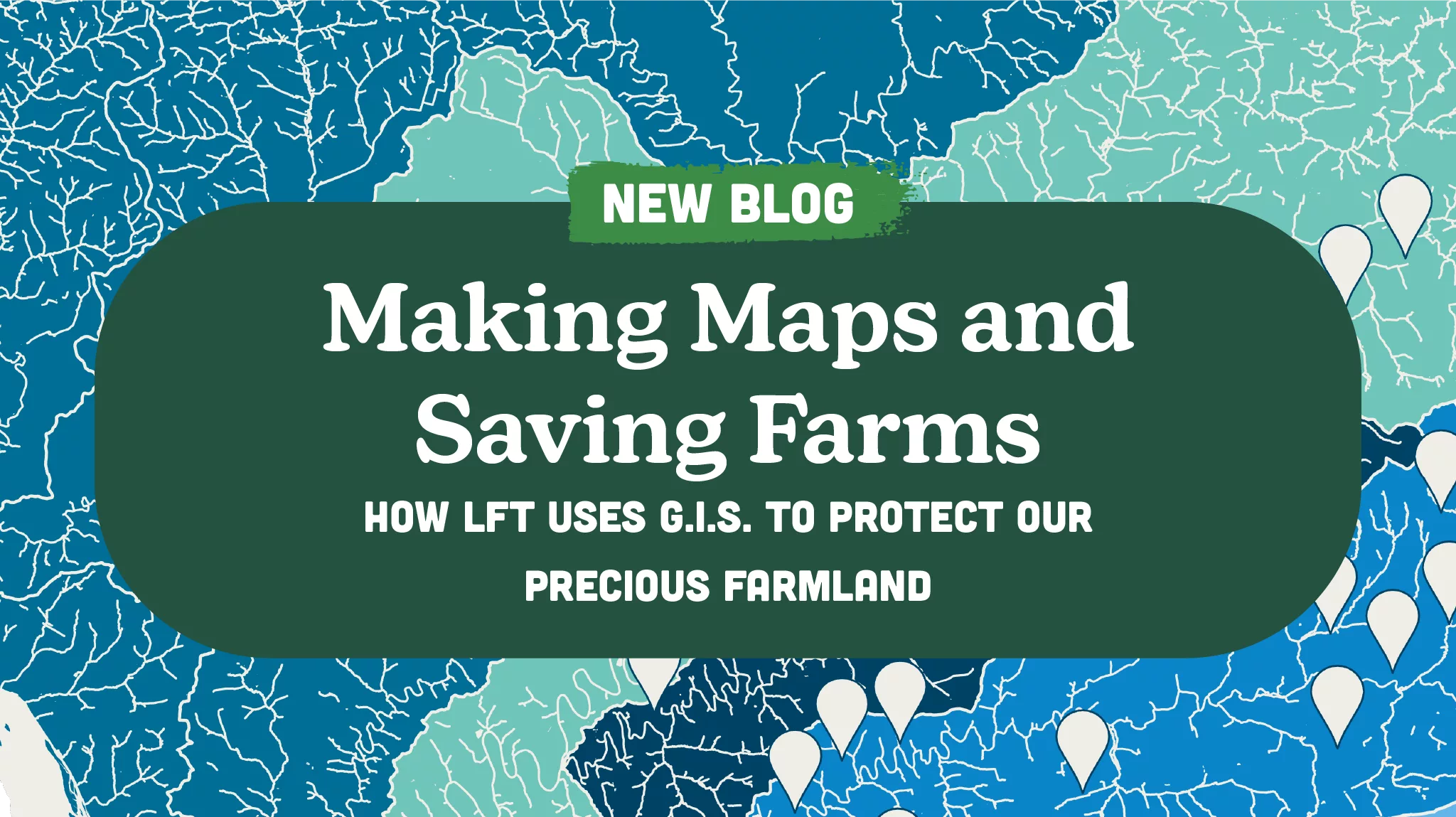Making Maps and Saving Farms

Picture this: you’re driving by a farm and notice a “For Sale” sign. You wonder if the farm is preserved, so you pick up your phone and call Lancaster Farmland Trust (LFT). If you’ve ever done this, you’ve likely employed the help of Laura Hershey.
Laura is LFT’s Land Protection and GIS Specialist, or as we like to call her, our resident map-making expert. Laura walks our farmers through the preservation process, from the first call to closing. However, when she’s not on a farm, she’s on GIS, analyzing data and making maps.
Today, Laura discusses GIS with us, how it works, and why it’s crucial for preservation.
What is GIS?
GIS stands for Geographic Information Systems. It’s a computer system that stores, analyzes, and visually represents geographic data, often with maps.
“It’s a great program for visual representation of data. We have all our farms in this database, and we can make visuals with the data we input,” Laura explains.
Laura oversees all the map-making at LFT, keeping records of preserved farms, scoring farm prospects, and illustrating data to the public.
Record Keeping
At LFT, we use GIS to store information about every farm we preserve, including landowner names, property size, impervious surface areas, and more. Each time a farm is protected, all of this data is recorded in GIS, and Laura makes a map of the farm to record its state at the time of preservation. Our Land Protection staff uses these maps to monitor property changes over time, ensuring they’re protected forever.
This data also allows us to see the number of preserved farms in certain townships, which watersheds those farms are located in, and so much more.
“GIS allows us to get information about our farms that would be really difficult to put together otherwise. It would be very time-consuming to figure out how many preserved farms are in an area without it.”
LESA Scoring
LESA Scoring plays a large role in the preservation process, and Laura uses GIS to do it.
LESA stands for Land Evaluation Site Assessment, and we use it to determine the viability of preserving a farm.
“LESA looks at soil class, how close the farm is to a designated growth area, the road frontage, size of the property, percent of tillable cropland and pasture, proximity to other protected farms, stream frontage, and whether or not there’s a conservation plan in place,” says Laura.
To obtain a LESA score, Laura puts all of the farm’s data points into the assessment in GIS. The software will then provide a score, which LFT will use to present the farm to our Board of Trustees for approval. If approved, this score helps our team determine how much money per acre to pay a farmer for preserving the property.
More recently, Laura has been working on a new GIS tool that scores multiple farms simultaneously. This tool will help our team identify farms that aren’t preserved but would have the most significant impact on protecting local farmland, allowing us to contact those landowners.

Marketing
One of the biggest parts of our work is sharing its impact with others. Often, we do this by sharing preservation, conservation, and stewardship maps, visually demonstrating our work to the community.
“These maps help us, and the public, understand what we do. When you see the number and space of preserved farmland on a map, it really helps you understand the impact of what we’re doing.”
Maps used to illustrate information to the public look much different than maps we use for record-keeping. These maps are focused on branding and readability, helping friends less familiar with preservation understand the data. This gives Laura the chance to work with the Communication team and be a bit more creative in her map-making, experimenting with different color choices and styles.
“That’s why I like GIS; I like that it’s creative and visual,” she notes.
From record-keeping to reporting, map-making is vital to the preservation process at LFT. Laura works hard to use GIS to its fullest potential, helping others understand our work. To learn more about the preservation process, click here. To stay up-to-date with all things LFT, follow us on Instagram, Facebook, LinkedIn, and TikTok!
